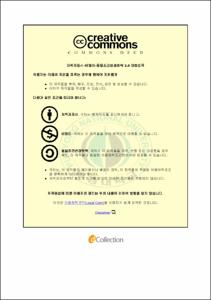영한 병렬자료에 나타난 영어 긍정문의 한국어 부정문으로의 번역
- Abstract
- Due to the intertwined nature of culture and language, we must take care when translating culture-specific discourse, as a culturally intertwined concept in one language may not have a direct equivalent within the target language. As a result of this reality in translating culture-specific concepts, there are certain methods for how to translate. For example, it is often found that English affirmative sentences are translated into Korean negative sentences. For instance, In English, the verb "remember" becomes "not forget" when translated into Korean.
The purpose of this thesis is to explain why affirmative-sentences in English are translated into negative-sentences in korean and how they are expressed. In addition, methods in negating affirmative sentences when translating from English to Korean will be investigated with a focus on the work of Ikegami(1991) and Talmy(2003). Our English-Korean parallel corpus shows 141 cases of negations, which may be expressed in a number of ways.
Firstly, positive sentences are translated as negative sentences by using "antonymy" which expresses the emphasis and ambiguousness of the original English text, such as the aforementioned example of "remember" becoming "not remember". Secondly, they are translated by using "synonymy" which adds a negative, for the purpose of constructing a euphemism, become-language, speech acts and emphasis. Thirdly, in "additional explanation", negative sentences are added in order to clearly express the original English text.
- Issued Date
- 2011
- Awarded Date
- 2011. 8
- Type
- Dissertation
- Keyword
- 영한 번역
- Publisher
- 부경대학교 일반대학원
- Affiliation
- 부경대학교 일반대학원
- Department
- 대학원 영어영문학과
- Advisor
- 김은일
- Table Of Contents
- 목차
Abstract …………………………………………………………………… ⅲ
Ⅰ. 서론 ………………………………………………………………………1
Ⅱ. 이론적 배경 …………………………………………………………… 4
2.1 부정문 ………………………………………………………………… 4
2.2 화행론 ………………………………………………………………… 6
2.3 언어표현 방식의 차이 ……………………………………………… 8
Ⅲ. 영어 긍정문의 한국어 부정문으로의 변환 ………………………… 11
3.1 반의어 ………………………………………………………………… 12
3.2 유의어 ………………………………………………………………… 23
3.2.1 문장형태변화 ……………………………………………………… 23
3.2.2 구문변화 …………………………………………………………… 28
3.2.2.1 명료화로 인한 번역 …………………………………………… 28
3.2.2.2 관계절 구문 …………………………………………………… 29
3.2.2.3 접속 구문 ……………………………………………………… 31
3.2.2.4 부사와 조동사 구문 …………………………………………… 32
3.2.2.5 이중부정 …………………………………………………………34
3.2.2.6 기타(의문문) …………………………………………………… 36
3.3 부연설명 ……………………………………………………………… 39
Ⅳ. 결론 …………………………………………………………………… 41
영한병렬자료 ……………………………………………………………… 44
참고문헌 …………………………………………………………………… 45
- Degree
- Master
- Files in This Item:
-
-
Download
 영한 병렬자료에 나타난 영어 긍정문의 한국어 부정문으로의 번역.pdf
기타 데이터 / 1.04 MB / Adobe PDF
영한 병렬자료에 나타난 영어 긍정문의 한국어 부정문으로의 번역.pdf
기타 데이터 / 1.04 MB / Adobe PDF
-
Items in Repository are protected by copyright, with all rights reserved, unless otherwise indicated.